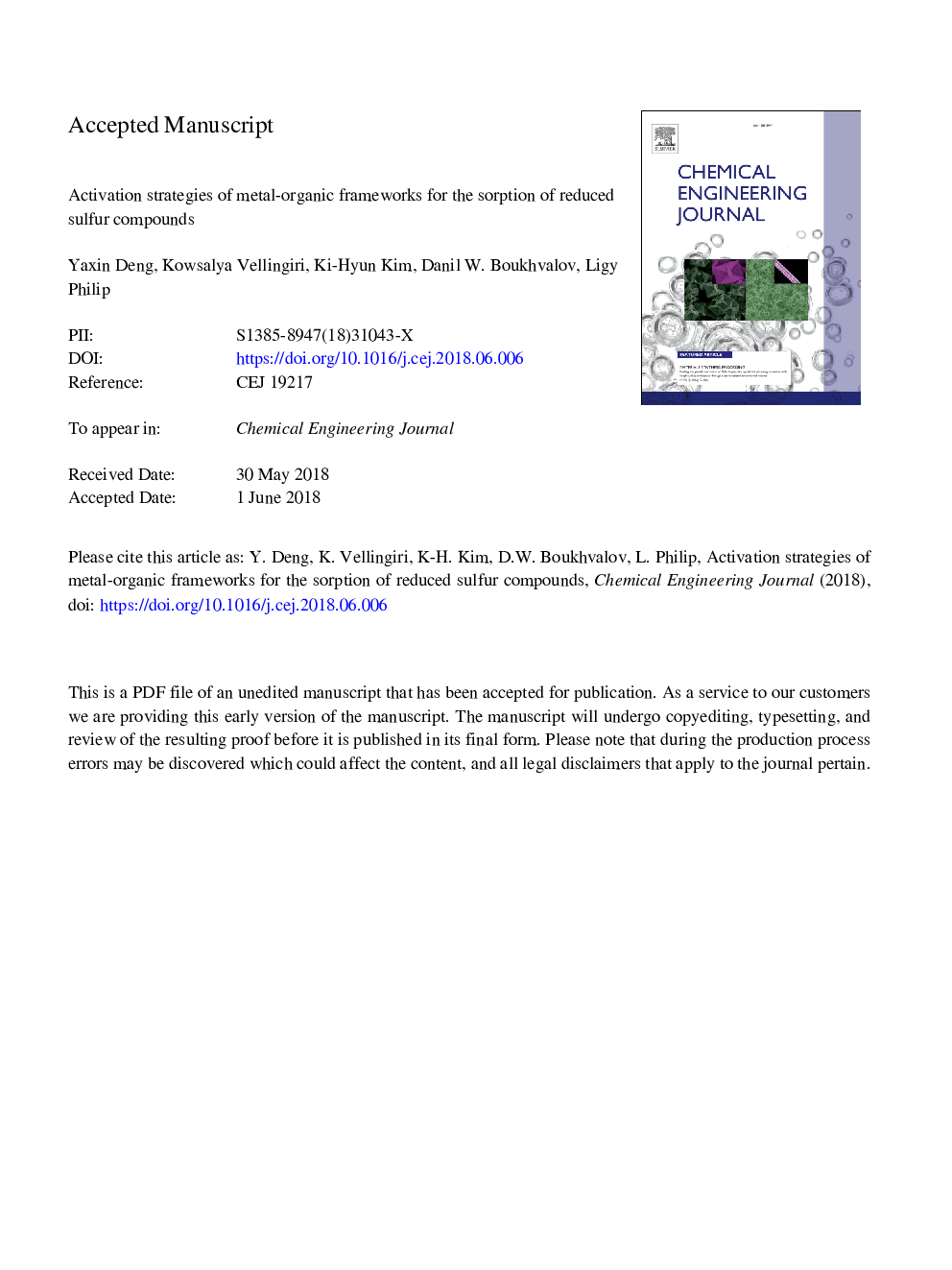| Article ID | Journal | Published Year | Pages | File Type |
|---|---|---|---|---|
| 6578343 | Chemical Engineering Journal | 2018 | 31 Pages |
Abstract
In order to investigate the possible options to improve the pore properties of metal-organic frameworks (MOFs), the sorptive capacity of MOF-199 was assessed based on the two contrasting activation approaches (i.e., 'chemical (C)' and 'thermal (T)' activation) against four reduced sulfur (S) compounds (RSCs: H2S, CH3SH, (CH3)2S (DMS), and CH3SSCH3 (DMDS)). In order to represent the pristine (C1) and chemically activated forms of MOF-199 (C2), the pores were filled by N,Nâ²-dimethylformamide (DMF) (i.e., as synthesized) and dichloromethane (CH2Cl2), respectively. For comparative purpose, these samples were further subject to thermal treatment (150â¯Â°C under 100â¯mLâ¯minâ1) and named as T1 and T2, respectively. The combined effects of chemical/thermal activation were found to be most effective to enhance the sorption capacity of MOF-199. (Note that such advantage was not evident when treated by chemical activation only.) Overall, the relative ordering of sorption capacities between four different types of MOF-199, when tested against diverse S compounds, was found to be DMDSâ¯>â¯CH3SHâ¯>â¯H2Sâ¯>â¯DMS. The mechanism for such sorption patterns was ascribed to two major competing interactions: a) S-Cu for lighter S and b) -CH3 group (in S compound) and aromatic ring (in MOF ligand) for heavier S. This synergetic effect was also confirmed by both theoretically (density functional theory (DFT)) and experimentally (Fourier Transform Infrared (FTIR) spectroscopy analysis). As such, MOF-199 prepared through both chemical and thermal treatments was identified as an efficient sorbent to capture S compounds even in ambient conditions.
Keywords
Related Topics
Physical Sciences and Engineering
Chemical Engineering
Chemical Engineering (General)
Authors
Yaxin Deng, Kowsalya Vellingiri, Ki-Hyun Kim, Danil W. Boukhvalov, Ligy Philip,
